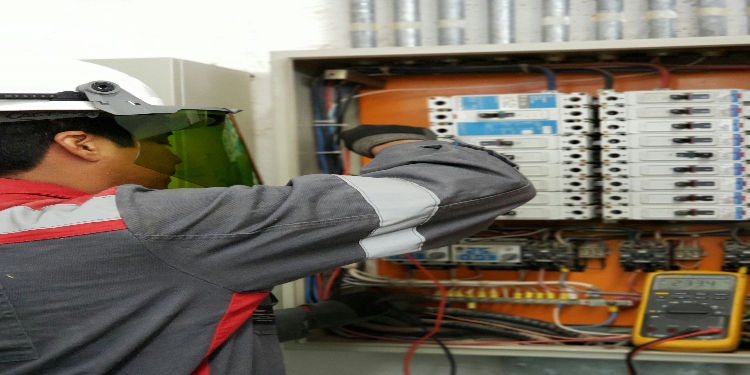In today’s fast-evolving industrial landscape, precision, speed, and reliability are crucial factors in the design of motion control systems. AC servo drives play a vital role in these systems by controlling the torque, speed, and position of electric servo motors. Selecting the right AC servo drive for your specific application is essential to ensure optimal performance, energy efficiency, and system longevity.
This comprehensive guide will walk you through the key considerations when choosing an AC servo drive, helping you make an informed decision that aligns with your application requirements.
1. Understand the Basics of AC Servo Drives
Before diving into the selection process, It’s important to know the definition and operation of an AC servo drive. An electronic device known as an AC servo drive modifies the voltage and current applied to a servo motor in response to an input signal from a control system in order to produce the desired motion. Applications including CNC machines, robotics, conveyors, and packing systems use these drives because they need exact control over speed, force, and positioning.
AC servo drives differ from standard motor drives by offering closed-loop feedback systems, which means they can continuously adjust motor performance based on real-time data from sensors.
2. Identify Your Application Requirements
The first step in selecting the right AC servo drive is to clearly define your application requirements. Ask yourself the following questions:
- What type of motion is needed (rotary or linear)?
- What are the torque and speed requirements?
- Is high positioning accuracy critical?
- What is the load inertia and how does it vary?
- Will the system run continuously or intermittently?
Understanding these parameters will help narrow down your choices and prevent oversizing or undersizing the drive, which can lead to system failures.
3. Match the Servo Drive to the Motor
Selecting a servo driver that has electrical ratings and control functions compatible with the servo motor is crucial. Key specifications to consider include:
- Voltage and Current Ratings: The servo drive must support the operating voltage and peak current of the servo motor. For example, AC servo drives for 400W-1000W servo motors must support the 220V voltage and 15A current of the servo motor.
- Encoder Feedback: Ensure the drive can interpret the type of encoder used (e.g., incremental, absolute, or resolver).
- Communication Protocols: Check that the drive supports the communication protocols used in your system (such as EtherCAT, CANopen, or Modbus).
Proper matching ensures that the drives can effectively control the motor and respond to system demands.
4. Consider Environmental Conditions
Environmental factors can significantly affect the performance and lifespan of AC servo drives. When selecting a drive, take into account:
- Ambient Temperature: Ensure the drive is rated for the operating temperature range of your environment.
- Humidity and Dust: Look for drives with appropriate ingress protection (IP) ratings if they will be used in harsh environments.
- Vibration and Shock: For applications involving movement or vibration, choose a drive designed to withstand mechanical stress.
These considerations help in selecting a durable and reliable drive suitable for your working conditions.
5. Evaluate Control Features and Functionality
Modern AC servo drives come with advanced control features that improve performance and flexibility. Depending on your needs, consider the following features:
- Position, Speed, and Torque Control: Make sure the drive can handle the control mode required by your application.
- Tuning Capabilities: Drives with auto-tuning can simplify setup and optimize performance.
- Safety Functions: Integrated safety features like Safe Torque Off (STO) can protect equipment and operators.
- Diagnostic Tools: Built-in diagnostics and fault reporting can facilitate maintenance and troubleshooting.
Selecting a drive with the right feature set can improve system efficiency and ease of use.
6. Size the Drive Properly
Proper sizing is critical to system performance. While a large drive can be challenging and costly, an undersized drive may overheat or collapse. Consider the following when sizing a drive:
- Peak and Continuous Torque Requirements: Ensure the drive can supply adequate current for both normal operation and peak loads.
- Duty Cycle: Determine how long the motor will run at full load versus idle time.
- Inertia Matching: A good drive/motor pairing should manage load inertia effectively without overshooting or instability.
Using manufacturer sizing tools or software can be very helpful in this process.
7. Ensure Easy Integration and Support
Integration with your existing system is another critical factor. Look for AC servo drives that offer:
- User-Friendly Interfaces: Drives with intuitive programming software or graphical user interfaces simplify configuration.
- Compatibility with PLCs and HMIs: Seamless integration with your control architecture can reduce setup time and improve reliability.
- Technical Support and Documentation: Choose a reputable manufacturer that provides strong technical support, documentation, and training resources.
This can save time during installation and reduce long-term maintenance costs.
8. Plan for Future Scalability
If you anticipate changes or expansion in your automation systems, select a drive that can accommodate future requirements. Features that support scalability include:
- Modular design for easy upgrades
- Support for multiple motor types or applications
- Firmware updates and customization options
Planning for the future can reduce the total cost of ownership and simplify upgrades down the line.
9. Budget and Total Cost of Ownership
While cost is always a consideration, it should not be the sole deciding factor. Evaluate the total cost of ownership (TCO), which includes:
- Initial purchase price
- Installation and commissioning costs
- Maintenance and downtime expenses
- Energy efficiency and operational savings
Investing in a high-quality, efficient AC servo drive can lead to long-term savings and higher productivity.
10. Visit Reliable Suppliers and Manufacturers
To ensure quality and reliability, it’s advisable to purchase AC servo drives from trusted manufacturers or authorized distributors. For product comparisons, technical resources, and expert support, visit reputable automation and motion control websites that specialize in servo systems.
Conclusion
Understanding the technical specifications, operating environment, and long-term objectives of your system is essential to selecting the best AC servo drive for your use. You may maximize efficiency, minimize downtime, and achieve better performance by carefully weighing these variables and matching the drive to your motor and control architecture.
With so many possibilities, choosing properly can help you keep clear of expensive blunders and guarantee optimal performance from your automation system. Making the right choice will help you succeed because AC servo drives are an essential investment.












































































